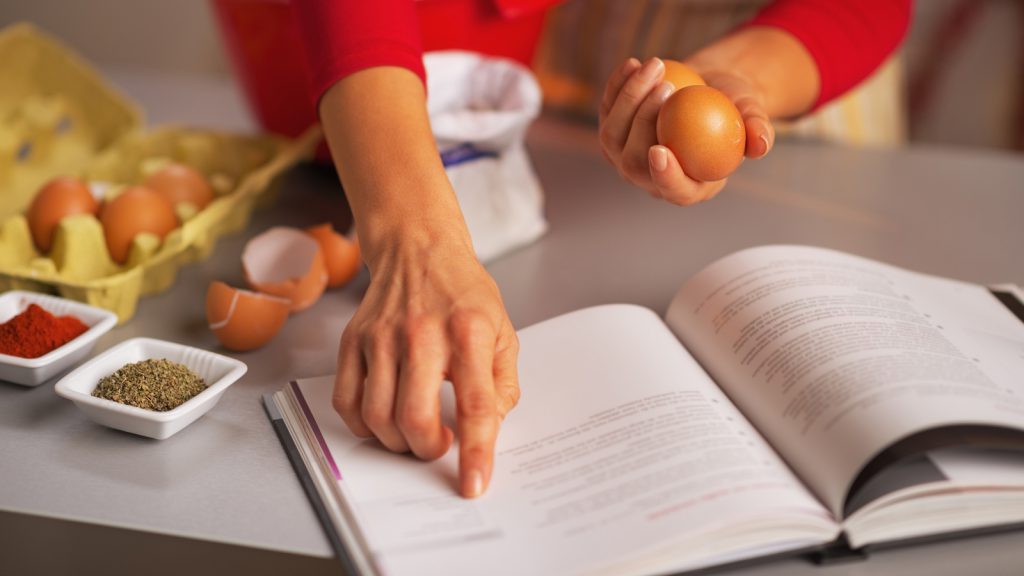It is estimated that around one in 10 foodborne illnesses in the Western world originate in the home. And, in the vast majority of those cases, the offending microbes come from the kitchen.
No matter how clean your kitchen looks, bacteria are always present. These tiny organisms are invisible to the naked eye. And they don’t smell — although they can make food smell, given time.
We all do our best to keep bacteria at bay in the kitchen. But unless you know the key problem areas to watch out for, you won’t be able to reduce bacteria levels in your kitchen to relatively safe levels.
We’ve compiled a list of the nine most common surfaces in the kitchen that can harbour bacteria. Put all of them on a strict cleaning schedule, and you can greatly improve your chances of avoiding many of these germs.

1. Kitchen worktops
This might sound obvious, but kitchen worktops are particularly susceptible to bacterial growth. Cross contamination is a real problem in homes. And in many cases, the issue relates to how we prepare food on worktops.
Imagine you’re preparing a meat casserole. You start by chopping up meat on your worktop. Once the meat is in the pan, you prepare your vegetables — often on the same surface. Unless you sanitise the area, there’s a chance some bacteria from the meat might transfer to the vegetables. That may not be a major risk if you’re cooking everything to a high temperature. But there’s a serious risk of cross contamination if you’re preparing, say, a salad or bread to go with your casserole.
Use a food-safe antibacterial spray to clean your worktops after every use. But make sure you’re giving it enough time to kill the bacteria. Spray the surface liberally, but don’t wipe it away immediately – many disinfectants need anywhere from 30 seconds to a few minutes contact to kill the bacteria on the surface.
2. Sponges
Sponges are easy to use, versatile and effective. But studies show that they’re notorious stores for bacteria too. The combination of food, warmth and moisture gives bacteria everything they need to multiply.
The average sponge comes into contact with food, hands, dishes, worktops, taps, handles, and just about every type of surface in the average kitchen. If there’s bacteria present on your sponge, it’s easy to see how quickly and readily it can be spread.
If you insist on using sponges, make sure they’re cleaned thoroughly after each use — at a temperature of at least 75oC – or give them a quick soak in boiling water. Ideally, each sponge should be limited to one job and one area of your kitchen.

3. Books
A lot of people love to display their recipe books in their kitchen. This in itself shouldn’t be a major issue. However, problems might arise if you’re flicking through pages with dirty hands as you cook.
You might, for instance, be preparing raw meat and need to check back in on the recipe, and then ten minutes later pick up the same page again, even though you may have washed your hands in-between . Wash your hands regularly with soap, and ideally use a stand for your recipe books while you use them.
4. The sink
Sinks provide bacteria with everything they need to multiply. There’s moisture, food, and lots of nooks and crannies like plugs, drains and overflows for microbes to gather in.
Don’t forget to sanitise your sink as part of your post-cooking routine. Remember you may well have just rinsed your raw meat chopping board in there – and washing up liquid won’t do the job – even if you buy a bottle that says it is ‘antibacterial’, they are only good for trying to keep your sponge bacteria-free overnight.
5. Tea towels
The best way to dry kitchen utensils and dishes is naturally. Tea towels speed up the process if you have to wash by hand, but they’re notorious breeding grounds for bacteria if left damp. Whatever is on your hands during food prep can end up on your tea towels, as most of us can’t resist a quick wipe. And whatever’s on your tea towels can end up on your dishes and utensils.
Give your newly cleaned dishes an hour to air-dry before putting them away. Or if you need something immediately, dry it with some kitchen roll or a paper towel. And if you don’t want to be without your tea towels, make sure you wash them regularly on a hot wash.

6. Hands
Bacteria aren’t all that mobile. If they’re going to get from one surface to another, they generally need a vehicle. This is why people are often the biggest food poisoning risk in a commercial kitchen.
As a simple rule of thumb, wash your hands with soap and hot water every time you change activities in the kitchen. So, if you go from preparing meat to rolling out pastry, wash your hands. If you go from taking out the rubbish to preparing bread, wash your hands.
7. Refrigerators
Bacteria stops multiplying at around 5C, and slows considerably at around 8C. But, contrary to popular belief, most food poisoning bacteria don’t die at these temperatures — they merely becomes dormant.
If you were to swab your fridge for bacteria right now, there’s a very good chance you’d find more than one potentially dangerous type of bacteria. This means you can’t take anything for granted.
Minimise the risk of cross contamination by storing raw meat at the bottom of your fridge. Next should be cooked and processed meats, followed by raw vegetables. All your packed products can be stored at the top. If you have any prepared foods in your fridge, store them in airtight, plastic containers.
At least once a month, empty your fridge and sanitise every shelf, compartment and surface. You can do this with a store-bought disinfectant spray or your own mixture of water and vinegar.
8. Utensils and appliances
There are certain utensils and appliances in household kitchens that don’t get cleaned every time we cook. For example, you clean the attachment on your handheld whisk, but obviously not the rest of the gadget.
Think about the appliances and utensils you have to touch every time you cook. When was the last time you sanitised these items? Think about how many bacteria are currently living on your kettle’s handle… or on your toaster’s switches. Every week, give these utensils and appliances a quick clean with an antibacterial wipe.

9. Fruit and vegetables
Fruit and vegetables are often identified as the source of food poisoning events in the home — because people don’t realise the risk they pose.
As many fruit and vegetables are eaten raw, and come in a pre-prepared form, there is an expectation that they have been in some way ‘sterilised’ before we eat them. Most however have just had a basic clean to make them look presentable, as most treatments to kill microbes would spoil the food or leave a taint. Remember to wash your salad leaves before you put them on your plate, and rinse root vegetables to remove any traces of soil before you cook or eat them.
Good hygiene practices, a stringent cleaning schedule and careful food management can reduce food poisoning bacteria in your kitchen to trace levels.


